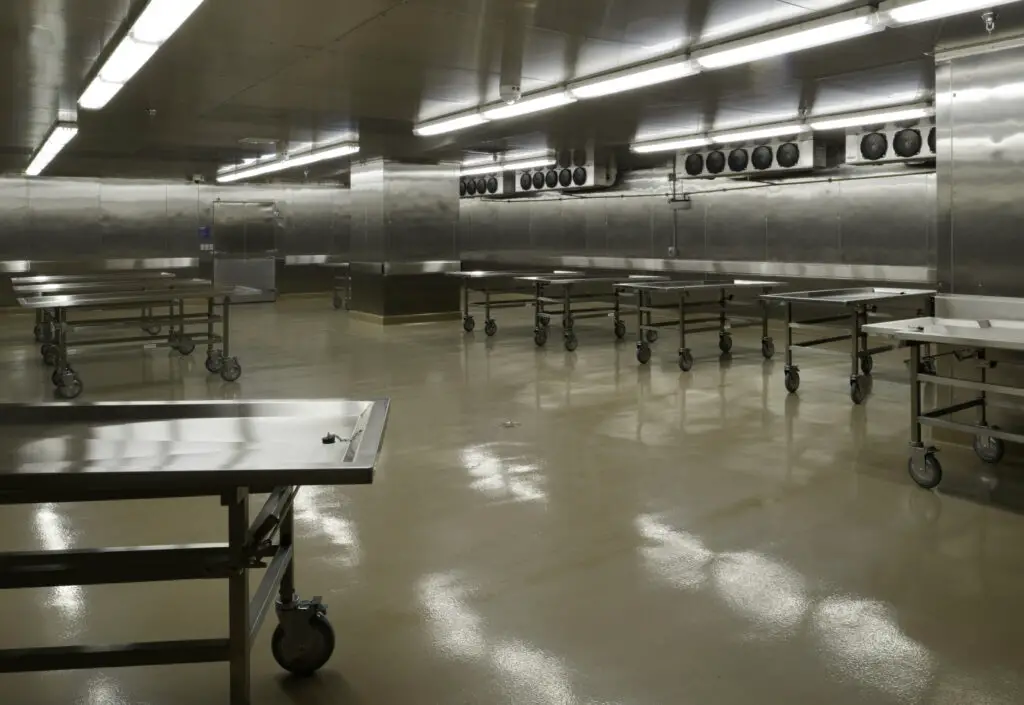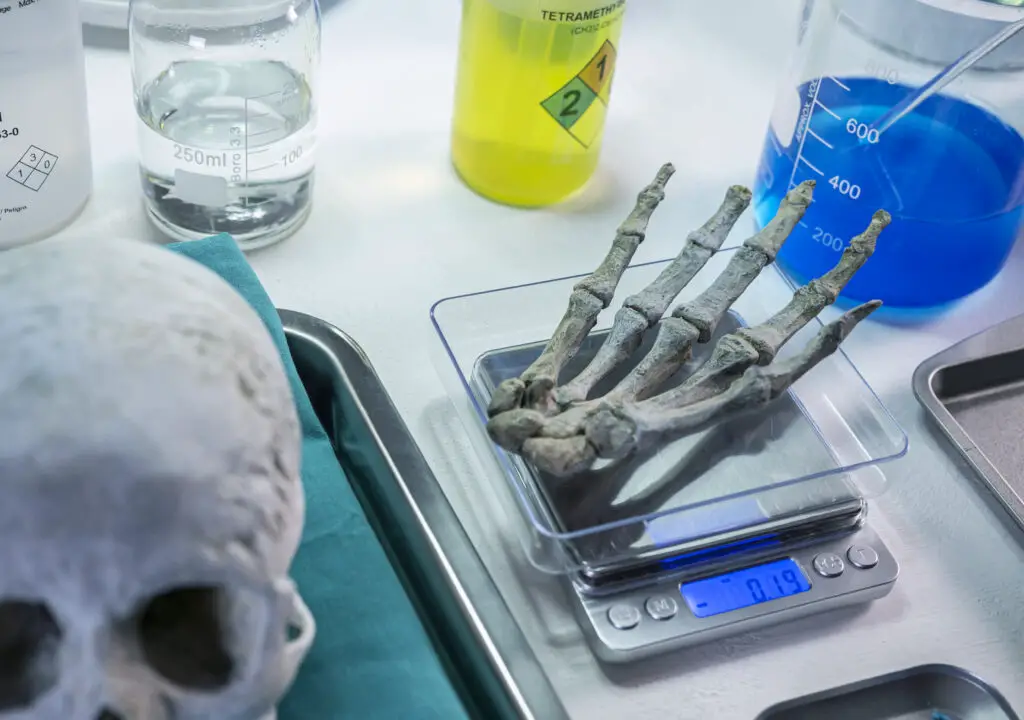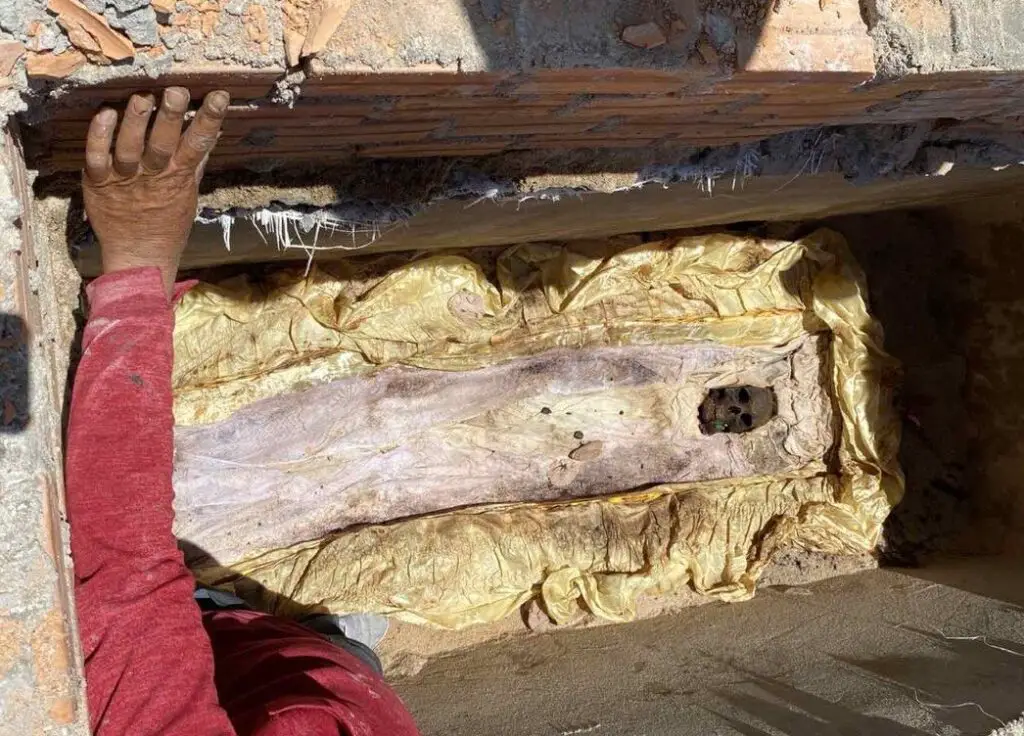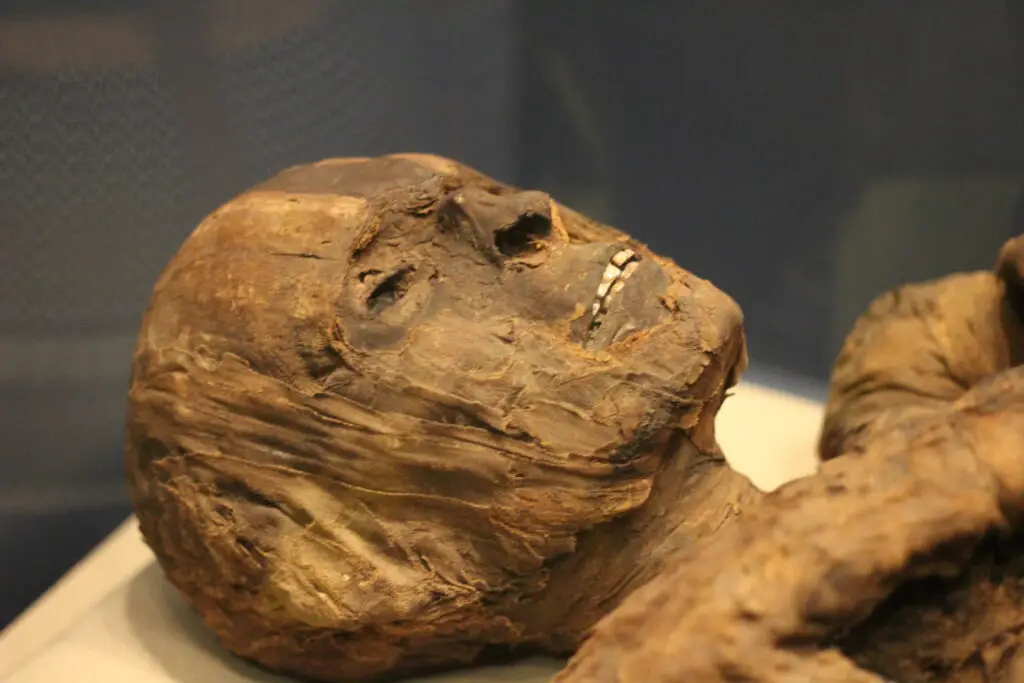- Embalming is the use of chemicals to slow natural decomposition
- Longevity varies according to factors such as fluid used, body condition, and storage
- The body will eventually decay because embalming is not permanent
As a former funeral director, one of the most common questions I was asked is “How long does embalming last?” Embalming is the process of treating a deceased person’s body in order to delay decomposition and preserve it for viewing or burial. In this article, I’ll go over the various factors that influence embalming longevity.
What Does Embalming Involve?
Embalming is the process of injecting a mixture of chemicals, including formaldehyde and other preservatives, into the bloodstream of a deceased person to delay decomposition. This solution is then drained, and the body is then prepared for viewing or burial. Embalming is usually done by a licensed funeral director or embalmer.
Importance of Starting Embalming Quickly
The embalming procedure should start as soon as possible after death for optimal results. It gets harder to create a natural appearance the longer the delay, as the breakdown process advances. Embalming works best on bodies that are at a colder temperature, therefore preparations like refrigeration are typical.
How Long Does Embalming Last?

Natural decomposition of an embalmed body will begin within a few days to several weeks of the procedure. The longevity of embalming depends on a variety of factors, including the techniques used, the condition of the body at the time of embalming, and the environment in which the body is stored. It’s important to note that embalming does not permanently preserve a body and it will eventually begin to decompose.
Factors Affecting Embalming Longevity
The following elements, among others, can influence how long an embalmed body will last:
Type of fluid used: Different types of embalming fluids have varying levels of preservation power, with some being more effective than others.
Condition of the body: If the body has been subjected to trauma or illness before death, the embalming process may not be as effective and the body may decompose more quickly.
Health of the deceased: A person’s general health before death can impact the effectiveness of embalming, with healthier individuals typically having longer preservation periods.
Storage environment (temperature, humidity): A hot and humid environment will cause the body to decompose more quickly than in a cool, dry room. Proper storage conditions, such as a refrigerated room, can help to slow down decomposition.
Preparation for viewing and burial (cosmetics, treatments): Cosmetics and other treatments used to improve the appearance of the body can contribute to preservation, but they can also lead to more decomposition over time.
Embalming Longevity – Funeral Services vs Scientific Study

Because embalming for funeral services and embalming for scientific research have different goals, different techniques are used. Embalming for funeral services has a lifespan of a few days to several weeks and aims to present the deceased as just “asleep”, and suitable for viewing by loved ones.
Embalming for scientific research aims to preserve the body for a longer period of time, sometimes even years. This process uses different chemicals and appearance is not prioritized. Instead, the embalmer uses techniques that keep internal tissues soft for dissection and medical training.
How Long Does a Body Last Without Embalming?
If a body is not embalmed or refrigerated, it will start to decompose within 24 to 48 hours. Bacterial decomposition is a natural process in which tissues degrade and gases are released. When a body is not embalmed, the process can begin soon after death, resulting in an unpleasant odor and visible bodily changes.
A variety of factors, including temperature, humidity, and the presence of insects or animals, will impact how long a body will last. The rate of decomposition varies depending on the individual’s general health, age, and body weight, with healthier people decomposing more slowly. To a lesser extent, burial clothing, a casket, and grave liners can also slow decay.
How Long Does a Refrigerated Body Last?

Depending on the kind of refrigeration unit used, refrigeration is a short-term method of corpse preservation that can last from a few weeks to several months. The body is kept in a low-temperature refrigeration unit as an alternative to embalming in order to halt the decomposition process.
Positive temperature and negative temperature mortuary refrigerators are the two types of equipment used for body preservation. Positive temperature mortuary refrigerators may hold a body for up to two weeks before the effects of decomposition start to show. In contrast, a body kept in a mortuary refrigerator at a negative temperature can be kept safe for a while. Important to keep in mind is that while chilling slows decomposition, it does not entirely halt it.
It should be noted that some states forbid the use of refrigeration for body preservation. They also regulate standards for a body to be embalmed or refrigerated within a certain number of hours of death.
Do You Have To Be Embalmed?
Embalming is not legally required in most countries. It is more common, however, if there will be an open casket viewing, if the body will be transported long distances, or if there is a time delay between death and the funeral. In these cases, embalming aids in slowing the decomposition process and preserving the body’s appearance.
It is certainly feasible to visit someone or hold an open-casket funeral when the person hasn’t been embalmed. The decision to embalm a body is usually made by the deceased’s next of kin or executor of his or her estate.
Alternatives to Embalming
Embalming is by no means a requirement and grieving families can choose among other options. These can include:
Refrigeration: The process of storing the body in a temperature-controlled environment to slow decomposition.
Immediate burial or direct cremation: Disposal of the body without embalming or other methods of preservation.
Green or natural burial: This involves burying the body in a biodegradable casket or shroud, which is a more environmentally friendly option.
The choice of alternative will depend on personal, cultural, or religious beliefs and practices.
What If You Are Unsure Whether You Want To See The Body?
If you are unsure about whether you want to see the body of a loved one, it’s important to take the time to consider your feelings and what would be best for you. Some people find seeing the body as a way to say goodbye and gain closure helpful, while others may feel overwhelmed or distressed by the experience. If you do decide to view the body, do so with a trusted friend or family member and take breaks as needed. It’s fine to decline if the idea of viewing the body makes you uncomfortable. The most important thing is to do what feels right for you and to allow yourself time and space to grieve in your own unique way.
How Long Can You Delay A Funeral Or Embalming?
Several factors can affect how long a funeral or embalming can be postponed. These include local laws, the cause of death, and the condition of the deceased.
On the first day after death, a body poses little risk to public health. However, the body will require some sort of embalming or preservation after 24 hours. Generally, funeral homes must embalm a body if the funeral service will be held more than 24 to 48 hours after death, or if the deceased will be transported across state lines. The body can be preserved for about a week at a mortuary, but after that time, decomposition will start regardless of embalming.
The wait time may be lengthier if the cause of death is still under investigation or if an autopsy is yet scheduled. In the case of a contagious disease, the body must be disposed of promptly, and the funeral or embalming may need to be delayed until the appropriate precautions can be taken.
The amount of time that a funeral or embalming can be postponed will depend on the laws that apply to the storage and disposition of bodies in each state. It is important to keep in mind that the longer a body is stored, the greater the likelihood of decomposition and potential health risks. For these reasons, it is best to make funeral or embalming preparations as soon as possible after a person passes away.
What Happens to an Embalmed Body in a Casket After Burial?
After an embalmed body is buried in a casket, the process of decomposition begins. The rate of decomposition will depend on various factors such as the type of soil, temperature, humidity, and the materials used in the casket. Embalming slows down the decomposition process by preserving the body, and the casket protects the body from the elements and helps to delay decomposition.
The casket also helps to prevent the entry of air, water, and other substances into the grave, which can hasten decomposition. However, over time, the casket will eventually degrade and allow the elements to reach the body, at which point decomposition will continue.
The remains of the body will eventually become part of the soil in the grave, and the process of decomposition will continue until there is no organic material left. This change can take several years, depending on the conditions in the grave.
Examples of Long Lasting Embalmed Bodies

Lenin’s Mausoleum: Vladimir Lenin’s body was embalmed and put on display in Moscow’s Red Square when he passed away in 1924. Lenin’s body preservation is regarded as one of the most well-known cases of embalming.
Jiang Qing: Jiang Qing, the wife of former Chinese leader Mao Zedong, was embalmed after her suicide in 1991. Before being cremated, her body was kept in storage for nearly 20 years.
The Egyptian Mummies: Some of the world’s best-preserved embalmed bodies are Egyptian mummies, some of which date back thousands of years. Ancient Egyptians believed in mummification as a crucial component of their religion because it preserved the body for the afterlife.
Anna Anderson: Anna Anderson was a woman who claimed to be the Grand Duchess Anastasia Romanov, the youngest daughter of Tsar Nicholas II of Russia. After her death in 1984, her body was embalmed and kept in a crypt in Virginia for several decades, leading to ongoing debates and discussions about her identity.
Conclusion
It is important to remember that embalming is primarily performed to prepare the body for open casket viewing; it is not required and is not always performed. The condition of the body and the embalming method has an impact on how long the process takes. It is important to realize that embalming is only a temporary preservation technique, and the body will eventually decompose. If you have any questions or concerns about embalming and the process, you should speak with a funeral director.
FAQs on Embalming Longevity

What happens to an embalmed body after 10 years?
An embalmed body will show clear signs of decomposition after 10 years, such as discoloration and tissue breakdown. The rate of decomposition will vary depending on a number of factors, including the embalming fluid used, the condition of the body at the time of embalming, and the environment in which the body is stored.
Do embalmed bodies decompose?
Yes, embalmed bodies decompose, but the process is slowed by embalming fluid. This is injected into the vascular system to postpone natural decomposition.
What does an embalmed body look like after a year?
An embalmed body will appear similar to how it appeared at the time of embalming, but due to decomposition, the skin may become discolored and the features may become distorted or sunken. Some signs of decomposition may be concealed by makeup or other preservation methods, but they will become more visible over time.
How long does it take an embalmed person to decay?
The rate of decay for an embalmed body varies depending on many factors such as embalming fluid used, temperature, humidity, and the environment in which it is stored, but it typically takes longer to decompose than an unembalmed body.
How long does an embalmed body look normal?
An embalmed body may appear normal for several weeks to a few months at most, but signs of decomposition will become visible after that.
Why would you not embalm a body?
Some people choose not to embalm a body for religious or cultural reasons, or because they prefer a natural burial without chemical treatment. Instead, they may choose refrigeration or “green” embalming methods. Some families also opt for direct cremation, in which the body is cremated immediately after death without a viewing or embalming.
Does embalming fluid smell?
Embalming fluid has a distinct odor that varies depending on the type of fluid used and the amount used. The smell may be more noticeable during the embalming process, but it should be gone by the time the body is ready for viewing or burial.
What happens if a live person is embalmed?
Embalming is a process reserved for the dead, so attempting to embalm a living person would be extremely dangerous and should be avoided at all costs. It is illegal and considered abusive. If ingested or injected into a living person, embalming fluid is toxic and can cause serious harm or death.



![Vietnamese Funeral Customs [DO'S & DON'TS] vietnamese funeral traditions](https://funeralcircle.com/wp-content/uploads/2020/12/Home-page-categories-3.jpg)


